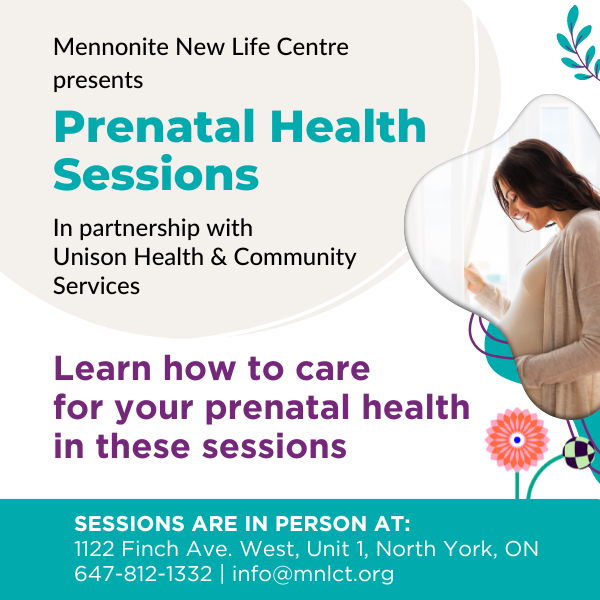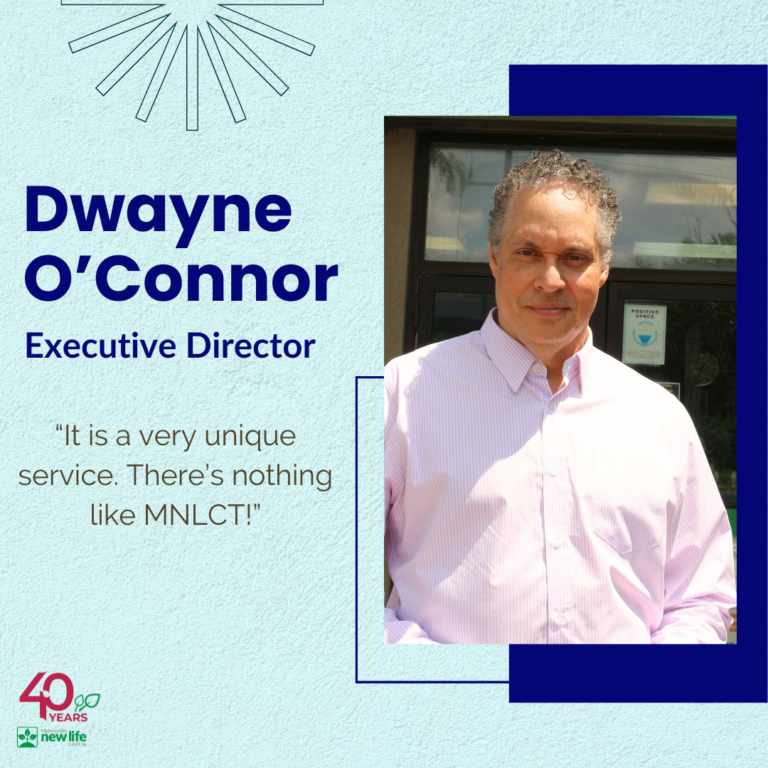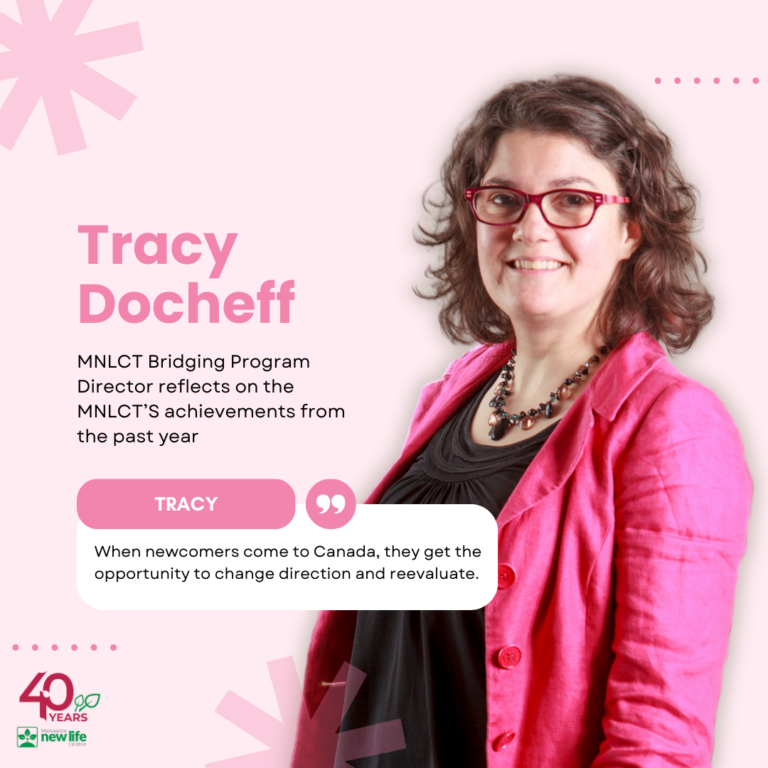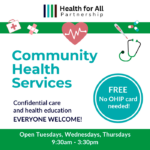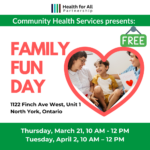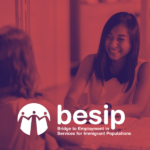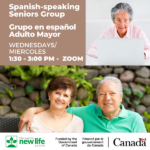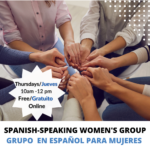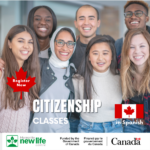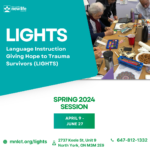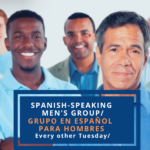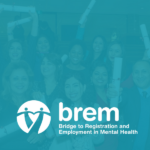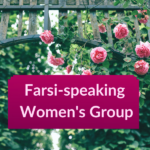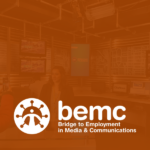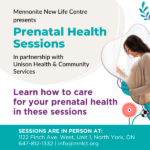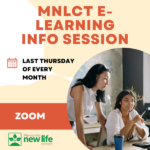Helping Newcomers
Make Canada Home
As a community-based settlement agency, the Mennonite New Life Centre of Toronto is a place of welcome, friendship and community, where newcomers and neighbours gather to support each other, learn from each other, and take action together for a more just and compassionate society.


Bridge
Your Career
Bridge
Your Career


Navigate Your First Days
in Canada
Navigate Your First Days
in Canada


Help Create an Inclusive
and Diverse Canada
Help Create an Inclusive
and Diverse Canada

Start
Your Business
Start
Your Business
Support Your
Organization’s Clients
Support Your
Organization’s Clients

Become
a Canadian
Become
a Canadian

Hire Diverse
Talent
Hire Diverse
Talent

In-person appointments are available Mondays to Fridays at our Keele office and on Wednesdays at our Finch office. Please contact us to make an appointment. We continue to offer services via phone, email, and online.
MNLCT Calendar 2024
-
No event
-
9:30 am - 3:30 pm
Community Health Services
Finch Office-CHS10:00 am - 12:00 pmFamily Fun Day
Finch Office-CHS -
9:30 am - 3:30 pm
Community Health Services
Finch Office-CHS10:00 am - 11:00 amC-Women Info Session
Online12:00 pm - 1:00 pmBESIP Info Session – Make your Immigration Experience your Career Advantage
Online1:30 pm - 3:00 pmSpanish-speaking Seniors Group
Online5:00 pm - 6:00 pmMental Health Support for Ukrainians
Online -
9:30 am - 3:30 pm
Community Health Services
Finch Office-CHS10:00 am - 12:00 pmSpanish-speaking Women’s Group
Online10:00 am - 12:00 pmCitizenship Classes in Arabic
Online12:00 pm - 1:00 pmBESIP In-person Info Session
Finch Office2:00 pm - 3:00 pmMandarin-speaking Seniors Group
Online -
10:30 am - 11:30 am
C-Women Info Session
Online12:00 pm - 1:30 pmCitizenship Classes in Spanish
Online -
No event
-
No event
-
10:00 am - 12:00 am
BESIP Info Session – Make your Immigration Experience your Career Advantage
Online -
9:30 am - 3:30 pm
Community Health Services
Finch Office-CHS12:30 pm - 3:30 pmLIGHTS Spring 2024 Session
Online5:00 pm - 7:00 pmSpanish-speaking Men’s Group
Online -
9:30 am - 3:30 pm
Community Health Services
Finch Office-CHS12:30 pm - 3:30 pmLIGHTS Spring 2024 Session
Keele Office1:00 pm - 3:00 pmSpanish-speaking Seniors Group – in-person
Keele Office1:00 pm - 2:00 pmBREM Info Session
Online4:00 pm - 6:00 pmFarsi-speaking Women’s Group
Online5:00 pm - 6:00 pmMental Health Support for Ukrainians
Online -
9:30 am - 3:30 pm
Community Health Services
Finch Office-CHS10:00 am - 12:00 pmSpanish-speaking Women’s Group
Online10:00 am - 12:00 pmCitizenship Classes in Arabic
Online10:30 am - 11:30 amC-Women In-person Info Session
Finch Office12:30 pm - 3:30 pmLIGHTS Spring 2024 Session
Online2:00 pm - 3:00 pmMandarin-speaking Seniors Group
Online -
12:00 pm - 1:30 pm
Citizenship Classes in Spanish
Online -
No event
-
No event
-
10:00 am - 11:00 am
BEMC Info Session
Online -
11:00 am - 12:00 pm
Prenatal Health Sessions
Finch Office12:30 pm - 3:30 pmLIGHTS Spring 2024 Session
Online -
12:30 pm - 3:30 pm
LIGHTS Spring 2024 Session
Keele Office1:30 pm - 3:00 pmSpanish-speaking Seniors Group
Online4:00 pm - 6:00 pmFarsi-speaking Women’s Group
Online5:00 pm - 6:00 pmMental Health Support for Ukrainians
Online -
10:00 am - 12:00 pm
Spanish-speaking Women’s Group
Online10:00 am - 12:00 pmCitizenship Classes in Arabic
Online12:30 pm - 3:30 pmLIGHTS Spring 2024 Session
Online1:00 pm - 2:00 pmBREM In-person Info Session
Finch Office2:00 pm - 3:00 pmMandarin-speaking Seniors Group
Online -
12:00 pm - 1:30 pm
Citizenship Classes in Spanish
Online -
No event
-
No event
-
9:00 am - 3:00 pm
BESIP New Cohort Start
Online -
9:00 am - 3:00 pm
C-Women New Cohort Start
Online11:00 am - 12:00 pmPrenatal Health Sessions
Finch Office12:30 pm - 3:30 pmLIGHTS Spring 2024 Session
Online5:00 pm - 7:00 pmSpanish-speaking Men’s Group
Online -
12:30 pm - 3:30 pm
LIGHTS Spring 2024 Session
Keele Office1:30 pm - 3:00 pmSpanish-speaking Seniors Group
Online4:00 pm - 6:00 pmFarsi-speaking Women’s Group
Online -
10:00 am - 12:00 pm
Spanish-speaking Women’s Group
Online10:00 am - 12:00 pmCitizenship Classes in Arabic
Online10:30 am - 11:30 amC-Women In-person Info Session
Finch Office12:00 pm - 1:00 pmMNLCT E-learning Info Session
Online12:30 pm - 3:30 pmLIGHTS Spring 2024 Session
Online1:00 pm - 2:00 pmBEMC In-person Info Session
Finch Office2:00 pm - 3:00 pmMandarin-speaking Seniors Group
Online -
12:00 pm - 1:30 pm
Citizenship Classes in Spanish
Online -
No event
-
No event
-
No event
-
11:00 am - 12:00 pm
Prenatal Health Sessions
Finch Office12:30 pm - 3:30 pmLIGHTS Spring 2024 Session
Online
How We Help

-
View AllView All
-
Living in CanadaLiving in Canada
-
Learning EnglishLearning English
-
ImprovingImproving
Your Wellbeing
Your Wellbeing
-
Looking for a JobLooking for a Job
-
Learning New SkillsLearning New Skills
Pour des services d’établissement en français et/ou la formation linguistique en français, veuillez trouver des services gratuits pour les nouveaux arrivants près de chez vous. | If you wish to access French language training and/or French settlement services, please find free newcomer services near you.


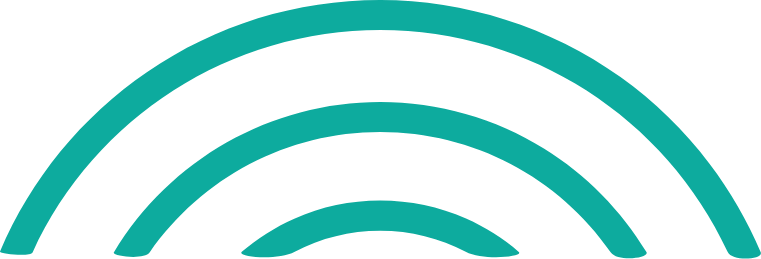

"The Mennonite New Life Centre and its BEMC program came in very handy for me at the lowest ebb of my life by providing a lifeline and I am eternally grateful for that.”
Victor- BEMC graduate
What’s Your Story



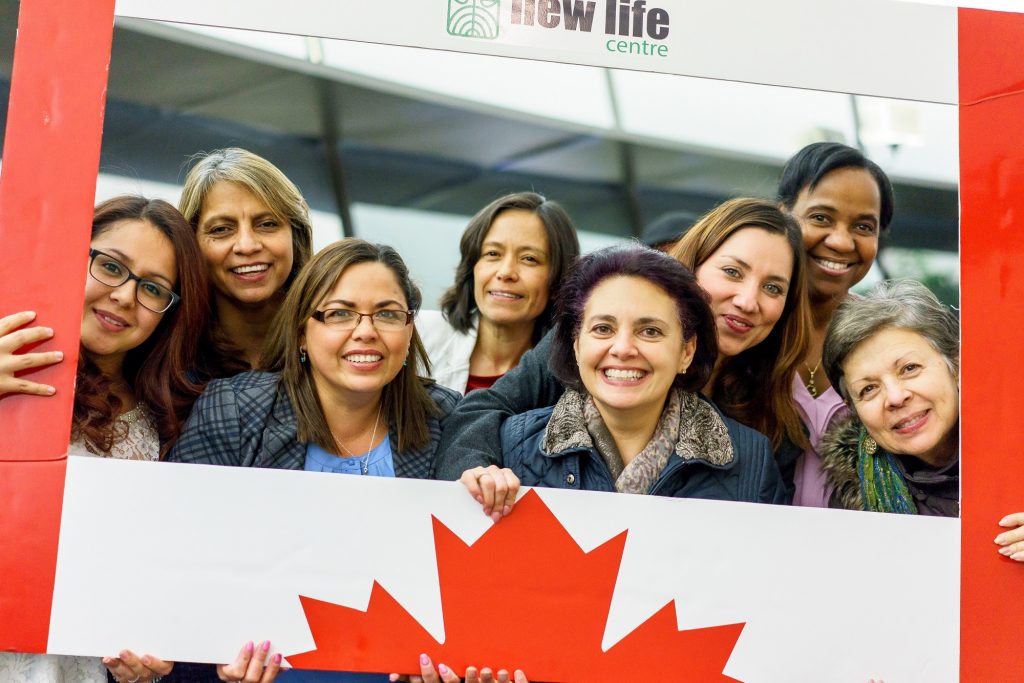
About Us
Mission Statement
The Mennonite New Life Centre’s mission is to facilitate newcomer settlement and integration through holistic services and community engagement, carried out within a gender justice and anti-oppression framework.
Vision Statement
The Centre envisions a society in which all people from diverse cultural and religious backgrounds participate fully in all aspects of Canadian life. We will model an approach that brings together community engagement and community services, working with newcomers to reduce insecurity and reach integration, strengthen voices and increase social equality.
Milestones
The Mennonite New Life Centre comes into being under the leadership of founding directors Adolfo and Betty Puricelli.
MNLCT moves to 1774 Queen St E, a building shared with two Toronto Mennonite churches. Around this time, the Centre begins to respond to a new refugee movement from the former Yugoslavia.
MNLCT celebrates its 25th anniversary by launching our first two internships for internationally trained psychologists, strengthening our mental health supports for refugees and immigrants struggling with different kinds of stress and trauma.
MNLCT opened a Finch office. The office is home to two bridging programs – Bridge to Registration and Employment in Mental Health (BREM) and Bridge to Employment in Media and Communications (BEMC) – as well as settlement and mental health counselling services.
MNLCT celebrates its 40th anniversary!

“The people who work for MNLCT are not only professionals, but also have a deep sense of empathy, which is very important when dealing with newcomers.”
Katerina - Settlement Services for Ukrainians, LINC class
What’s Your Story



about our centre
Download free
Community of Care app now added!
Available in English, Arabic, Mandarin, and Spanish
The MNLCT Newcomer
Support App





